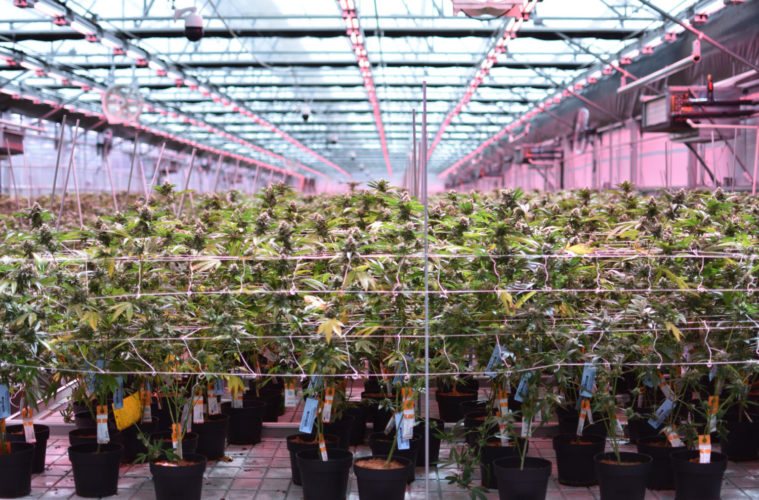The time of year has arrived for the first light deprivation grown harvests of 2021.
First off, for the uninitiated, deps is the standard term for weed that is grown using a light deprivation technique where growers control the light cycle to make the plant flower at their will. The actual mechanisms that cultivators use to control the light cycle vary wildly from cheap hoop houses with tarps on top to $100 million facilities where everything is automated. The resulting pot, regardless of quality, is still light dep.
Note: We understand that there were earlier drops of light-assisted deps earlier in the year. In that process, growers use supplemental lights to dial in the plants’ light cycle when there is not enough natural light in the day to do the job. This is also good pot. The next generation of LED-assisted deps looks absolutely wild.
But we’re celebrating the first deps grown in the more traditional fashion with just the sun to assist. As they start to come in, we’ll begin to see even more bomb affordable flowers hit California shelves. Much of the best material will be fought over by hash manufacturers hoping to get the best terps and yields out there.
Leafly California Editor David Downs has been one of the main journalists covering flowers in California for a decade. Downs is adamant the quality of the deps dropping these days are pristine. Downs even noted industry pros felt deps made better hash than indoor.
“You just got to keep them clean,” Downs said. “I think deps are the future of all cannabis – combining the control of indoor with the savings and authentic spectrum of outs.”
Downs even offered up a recent pick that proved the quality can still hold up beyond that fresh material coveted by hash makers. He noted Waverider Nursery’s Chem Driver at 24% THC was very terpy. “And the manufacturing date was fall 2020. So they stored them perfectly,” he said.
As markets continue to expand around the country, deps will give California the opportunity to provide the wider masses with high-quality cannabis without as much impact on the electric grid, and in some cases better water conservation techniques than available with traditional outdoor. Even something as simple as smoked glass on a greenhouse or a sunshade diffusing the light will slow down the process at which moisture exits the grow medium.
There will always be hyper boutique indoor farms in California. Even if there is an attempt to regulate them out of existence via energy caps or LED mandates, the heat will persevere in the underground market that’s still way bigger than the legal one. And that weed is going to be really expensive in the years to come. The reason? We don’t actually know how far the best pot will eventually scale up. So far so good for many in maintaining their quality while they’ve grown as a company, but can they meet the demands of 50 states? Time will tell.
Deps grown in California’s hills and major agriculture regions will have no problem supplying eventual international demand. The bar for quality will be lower, but there will be plenty of great renditions of all the strains of any given moment in the future grown in dep. It will maximize the quality available to all.
Deps also provide a mechanism to preserve value for farmers devastated by fire. While the dep production across the state has snowballed in general, in the places hit the hardest by fire, they might be able to get some value out of their year if the smoke comes. One of our favorite farms in the Emerald Triangle got hit by extensive smoke cover last year, devastating the crop. But thankfully, that farm had already dropped a whole run of deps. Their year was not a total loss thanks to deps.
Advertising disclosure: We may receive compensation for some of the links in our stories. Thank you for supporting LA Weekly and our advertisers.

